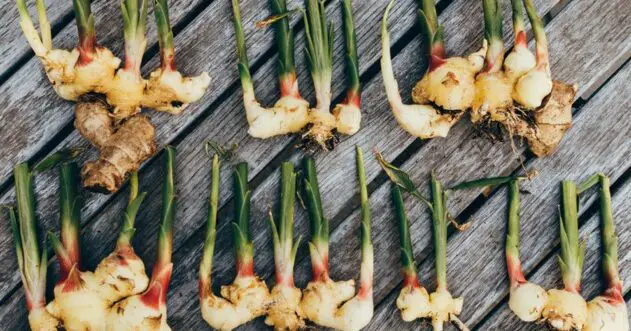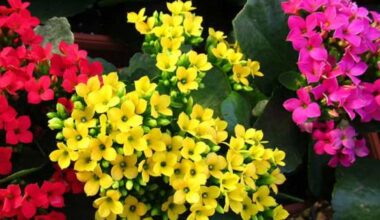Ginger multiplies and reproduces by dividing its rhizome. It needs humid, warm and sunny weather to grow, which is why it is usually found in tropical countries.
This root, which comes from Asia and is given all sorts of aphrodisiac powers, is one of the indispensable parts of a Chinese kitchen garden worthy of the name.
Contents
Choosing your ginger root
No need to run to the Chinese grocery store on the other side of town to choose your ginger root for planting. It can be found in almost every supermarket. But the best thing is to get it from an organic store, to make sure you’re getting a chemical-free product.
Ginger multiplication
Ginger multiplies by division of the rhizome in the spring. However, as it is a tropical plant grown in pots, this can also happen in the fall. The rhizome is buried on the surface, leaving a part of it to emerge so that the leaves can develop. Some people prefer, before planting, to place the rhizome on a glass of water so that it can take root.
When to divide ginger
The culinary ginger we know and love comes from Zinginber officinale, but there are ornamental ginger members in the genera Hedychium and Curcuma that produce beautiful flowers and attractive foliage.
Most of them are native to tropical to subtropical regions and need well drained soils, sunshine and warm temperatures. Rhizomes are the part of the plant that is divided to make new plants or simply to separate old rhizomes from new ones and increase growth.
The prevailing wisdom is to divide the ginger points to divide when the weather is warm, but recent rains have occurred. Most ginger plants produce rhizomes close to 3 to 4 inches. Rhizomes are underground modified stems that have growth nodes. It is from these growth nodes that new plant material will germinate. Therefore, these are the rhizomes that you harvest during the division of the ginger plant.
If you see many rhizomes growing on the soil surface, it is time to divide the plant. Dividing a ginger plant once this happens will keep the plant healthy and allow you to harvest those rhizomes, either for culinary use as in the case of Zinginber or simply to create more plants.
How to divide ginger?
Store the jar, with the ginger root tubers remaining after harvest, in a cool, dark place to allow them to become dormant.
They will be re-vegetated in February-March, with a supply of compost and regular watering. You can also harvest everything, and leave at the end of winter with a new rhizome bought in an organic store.
If you wish to fragment these rhizomes to plant several plants, make sure that at least one bud is present on the fragment in question.
To divide the ginger, take the stump out with a spade fork, and replant each tuber in the ground, or in a pot until you find their final place in the garden.
What to do after dividing the ginger
After dividing a ginger plant, you should have several viable roots or rhizomes. You can use some of them as kitchen flavouring or plant them immediately. In many areas, it is best to start the plant in a container so that it can be brought indoors in case of cold weather.
Use well-drained soil with plenty of compost incorporated. Lightly moisten the soil and install each rhizome at least 3 inches below the soil surface with the majority of the growth nodes pointing to the sky. Keep the soil slightly moist but never soggy.
If temperatures are at least 70 to 60°F, rhizomes should germinate in a few weeks. You can move them into the soil once you have a pair of real leaves, or grow them in the container.
Summary
Ginger is a perennial plant that grows from rhizomes. Separating a ginger periodically will encourage new growth and can harvest new plants from divided rhizomes.
Division of the ginger plant should be done when a container is tight or when garden plants are at least 3 years old. You can use the rhizomes for flavoring and tea, or plant them again to develop additional plants for your landscape or give to a deserving family member or friend. The trick is to know when to divide the ginger and how to do it without damaging the mother plant.









